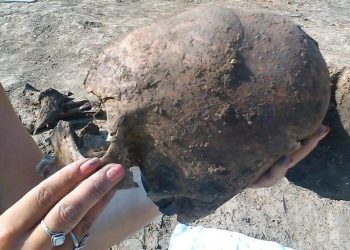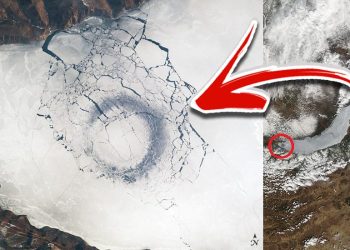A recent discovery in North Florida may significantly alter our understanding of the first human inhabitants in both North and South America. According to Jorge Levy, an anthropologist at Chile’s Universidad Diego Portales, “This finding has the potential to reshape our theories and lead to new conclusions about the earliest populations in the Americas.” Levy’s remarks follow the groundbreaking revelation that humans were living along the Aucilla River in Florida, approximately 20 miles east of Tallahassee, around 1,500 years before the arrival of the Clovis people. The Clovis culture, named after the distinctive stone spearpoints they produced, has long been regarded as the first human community in the Americas, dating back to about 13,000 years ago. For the past four years, archaeologists from Texas A&M University and Florida State University have been unearthing stone tools from a deep pool within the Aucilla River. These tools were discovered alongside the remains of mastodons and other large prehistoric animals, which early humans likely hunted for food.
One of the most notable artifacts recovered is a sophisticated “bifacial” stone knife, skillfully chipped to sharpness on both edges. Carbon dating of the tools and the human-made marks on the animal bones revealed an age of approximately 14,550 years. These findings, which were reported in the journal Science last month, challenge the long-held belief that the Clovis people were the first to inhabit the Americas. Levy is particularly intrigued by the timing of this discovery. He points out that 14,500 years ago, there was no ice bridge between Siberia and Alaska, contradicting the prevailing theory that the first humans entered the Americas from Asia via this frozen land bridge. “This discovery challenges that theory, as there was only open ocean between Siberia and Alaska 14,500 years ago,” Levy explains. “This period predates the last ice age and suggests that early human migration into the Americas might have occurred through alternative routes.”
The implications of this discovery are significant for researchers in South America. Levy notes that scientists in Peru and Ecuador may now revisit evidence of early human habitation that had previously been dismissed by North American researchers. “We have stone tools that we believe date back to 13,500 to 14,000 years ago, but due to issues with the initial handling of these objects, there were doubts about the accuracy of the dating. Now, with this new evidence, we have a reason to re-examine these findings,” he says. Officially, the earliest human presence in South America has been dated to around 12,000 to 12,500 years ago. The Florida discovery site is located in a 30-foot-deep sinkhole in a section of the Aucilla River known as Half-Mile Run. During the late Pleistocene, when sea levels were 300 feet lower and Florida’s climate was much drier, this sinkhole was a spring-fed pond that served as a vital water source for both animals and humans.
Michael Waters, the lead researcher from Texas A&M University, believes that the Aucilla River site presents the most compelling evidence yet for pre-Clovis human habitation in North America. “We have clear, meticulously excavated artifacts that were found in their original geological context,” Waters states. “These tools were buried under four meters of sediment, sealed by a shell layer dated to 14,400 years ago. With 71 radiocarbon dates supporting the timeline, this site offers the strongest case yet for pre-Clovis human presence. If skeptics doubt this site, they are unlikely to accept any other.” This discovery not only challenges existing theories but also opens the door to a deeper understanding of the migration and settlement patterns of the earliest humans in the Americas.











